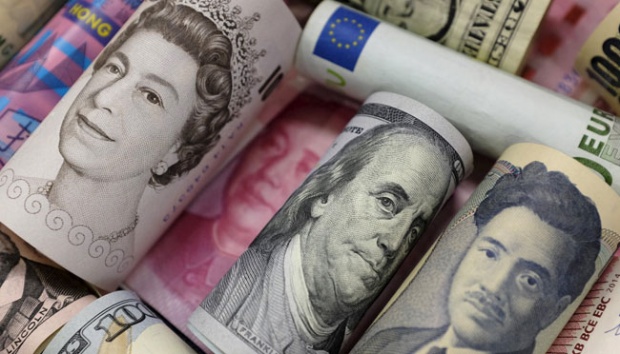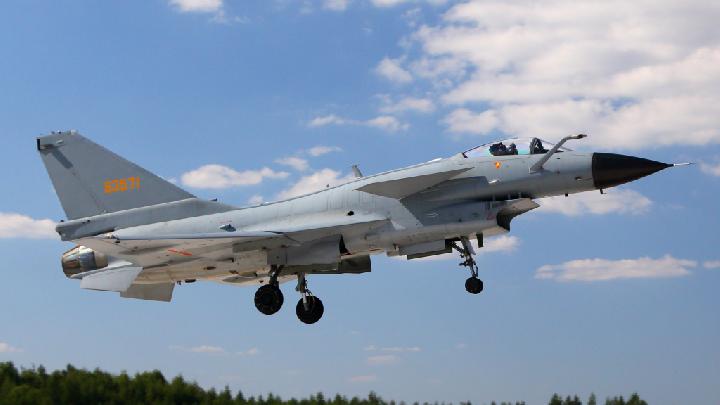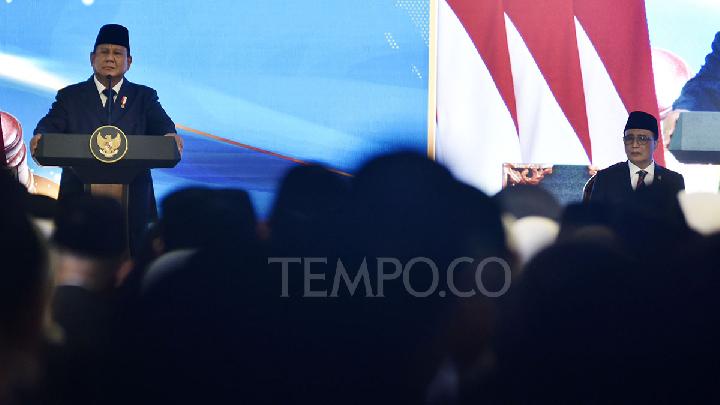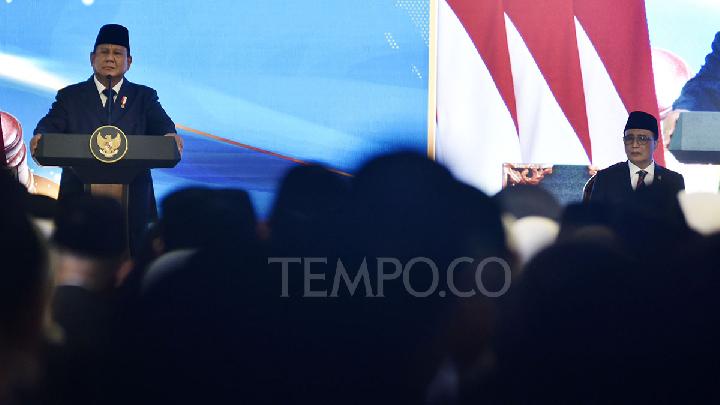
TEMPO.CO, Jakarta - A new study from the Pew Research Center found that Islam experienced the most significant growth among all major religions between 2010 and 2020, making it the world’s fastest-growing religion, Middle East Eye reports.
The Pew Global Religious Landscape study attributes this increase primarily to natural demographic factors, such as higher birth rates and younger average ages among Muslims, rather than to conversion.
The report notes that “Muslims are having more children and at younger ages than members of other major religions.” For the period 2015-2020, the average Muslim woman was estimated to have 2.9 children, compared to 2.2 children for non-Muslim women.
Global Religious Shifts
The study examined changes in the global religious composition over a decade and found that Christianity remains the world’s largest religion, with 2.3 billion adherents. However, the gap between Christians and Muslims is narrowing. This is because the number of Muslims has grown by almost 350 million since 2010 – almost three times as much as Christians and more than all other religions combined. Muslims now number about two billion, or about a quarter of the world’s population.
Meanwhile, the number of religiously unaffiliated people – sometimes called “nones” – has also grown substantially, increasing by 270 million since 2010. This group, along with Muslims, is the only major category to grow as a share of the world’s population over that period. Hinduism, the world’s third-largest religion, grew by 126 million people, but its share of the population was unchanged.
Other religions, including Sikhism and the Baha’i Faith, together make up about 2.2 per cent of the global population, while Judaism grew by almost a million people and now represents about 0.2 per cent of the world’s population. Buddhism was the only major religion to decline, with 18.6 million fewer adherents in 2020 than in 2010, down from five percent to four percent of the global population.
Regional Patterns and Religious Shifts
Most of the Muslim population growth occurred in countries where Muslims were already the majority. The largest relative increases were seen in Kazakhstan, Benin, and Lebanon, while Oman and Tanzania experienced declines in Muslim numbers.
In contrast, the religiously unaffiliated population grew most rapidly in the United States, nearly doubling over a decade. The largest share of the unaffiliated is in China, which has 1.3 billion people who are not affiliated with any religion.
Christianity remained the majority religion in 60 percent of the countries and territories surveyed, but it declined by at least five percent in 40 countries, with significant increases in only one country. The study attributes this decline to religious conversion: for every adult who converted to Christianity, three left the religion between 2010 and 2020.
The opposite trend was seen for the religiously unaffiliated, where for every adult who left a religion, three joined. Both Buddhism and Hinduism also saw an increase in the number of adults leaving the religion than joining. Islam was the only major religion with a net gain in conversion, as more adults joined than left.
Demographic Drivers of Growth
The study highlights that Islam’s rapid growth is driven more by demographic factors than conversion. Muslim populations tend to be younger and have higher fertility rates than other religious groups. These factors mean that more Muslims are entering their childbearing years, accelerating population growth.
This trend is expected to continue, with the Muslim population projected to continue to grow in the coming decades. Pew’s analysis suggests that conversion has had a small net impact on the size of the global Muslim population.
Editor's Choice: World's Best Muslim-Friendly Country Destinations, Indonesia Ranks First
Click here to get the latest news updates from Tempo on Google News
VP Gibran Envisions Halal Industry as Catalyst for Indonesia's Development
2 hari lalu

Vice President Gibran Rakabuming Raka mentions the huge opportunity for Indonesia, with a 245 million Muslim population.
UN Secretary-General Sends Eid al-Adha Greetings Amid Global Conflict
5 hari lalu

"My warmest wishes to everyone celebrating #EidAlAdha," UN Secretary-General Antonio Guterres posted on his social media platform X.
5 Places to Visit during Eid al-Adha for Middle Eastern Travelers
8 hari lalu

Eid al-Adha is just around the corner, and these amazing places to visit during Eid are ready to welcome you for a truly exciting holiday experience.
UN: Gaza Has the Highest Hunger Rate in World
9 hari lalu

The United Nations (UN) has said that Gaza is now the "most hungry place in the world" with its entire population at risk of mass starvation.
Saudi Official Denies Reports of Lifting 73-Years-Old Alcohol Ban
11 hari lalu

Saudi Arabia is reportedly considering opening stores to sell alcohol in limited outlets, something that the state official swiftly denied.
10 Strongest and Weakest Currencies in the World 2025
14 hari lalu

Here is a list of the 10 strongest and weakest currencies in the world in 2025 based on the exchange rate with the US dollar.
10 Biggest Fish in the World, from Sharks to Rays
20 hari lalu

Some of biggest fish in the world are living proof of how unique and mysterious underwater life can be, with these giants silently roaming the depths.
10 of the Most Beautiful Landscapes in the World
24 hari lalu

From serene islands to magical waterfalls, some of most beautiful landscapes in the world strikingly reveal nature at its most dramatic & dreamlike.
OIC Parliamentary Union Wraps Up with Jakarta Declaration
26 hari lalu

The 19th Conference of the Parliamentary Union of the OIC (PUIC) resulted in several recommendations named the Jakarta Declaration
Prabowo Says Muslim Nations Must Remain Strong to Aid Palestine
27 hari lalu

Prabowo Subianto says the voices of OIC member states will be dismissed when they are weak.































:strip_icc():format(jpeg)/kly-media-production/medias/3977835/original/066021800_1648524608-pexels-ahmed-aqtai-2233416_1_.jpg)
:strip_icc():format(jpeg)/kly-media-production/medias/3449231/original/035609000_1620241432-000_99C2L3.jpg)
:strip_icc():format(jpeg)/kly-media-production/medias/4779768/original/056174500_1711004488-hands-holding-knife-fork-alarm-clock-plate-blue-background.jpg)
:strip_icc():format(jpeg)/kly-media-production/medias/4678420/original/041411600_1701993066-pexels-thirdman-8489077.jpg)
:strip_icc():format(jpeg)/kly-media-production/medias/5134530/original/076641900_1739622826-20250215-Prabowo-AFP_7.jpg)
:strip_icc():format(jpeg)/kly-media-production/medias/3626995/original/056226000_1636431538-252444828_305857281141144_6357930935168472204_n.jpg)
:strip_icc():format(jpeg)/kly-media-production/medias/1619105/original/061499300_1496997418-ramadan-main.jpg)
:strip_icc():format(jpeg)/kly-media-production/medias/3508689/original/070798000_1626139545-20210713-Elon-Musk-SolarCity-5.jpg)
:strip_icc():format(jpeg)/kly-media-production/medias/4769102/original/014075000_1710171937-20240311-Taraweh_Pertama_di_Istiqlal-ANG_1.jpg)
:strip_icc():format(jpeg)/kly-media-production/medias/5106410/original/089112900_1737608852-Buya_Yahya.jpg)
:strip_icc():format(jpeg):watermark(kly-media-production/assets/images/watermarks/liputan6/watermark-color-landscape-new.png,1100,20,0)/kly-media-production/medias/5140628/original/019242500_1740225866-Persita_Tangerang_vs_Borneo_FC-35.jpg)
:strip_icc():format(jpeg)/kly-media-production/medias/3902213/original/084057500_1642045386-pexels-ralph-w-lambrecht-1446076__1_.jpg)
:strip_icc():format(jpeg)/kly-media-production/medias/4878826/original/064720000_1719661833-WhatsApp_Image_2024-06-28_at_23.09.07.jpeg)
:strip_icc():format(jpeg)/kly-media-production/medias/5141412/original/005545700_1740364919-Snapinsta.app_481203089_18446336839077229_3957692586101845976_n_1080.jpg)
:strip_icc():format(jpeg)/kly-media-production/medias/771429/original/006248600_1416892825-m2.jpg)
:strip_icc():format(jpeg)/kly-media-production/medias/2265569/original/050855900_1530514161-20180702-Harga-Pertamax-Naik-di-Semua-Daerah--TALLO-4.jpg)
:strip_icc():format(jpeg)/kly-media-production/medias/2240997/original/070157500_1528277766-arches-architecture-building-460680.jpg)
:strip_icc():format(jpeg)/kly-media-production/medias/4787912/original/016408900_1711630423-20240328-Penukaran_Uang-AFP_6.jpg)
:strip_icc():format(jpeg)/kly-media-production/medias/5139103/original/083951400_1740056485-Screenshot_20250220_192744_Instagram.jpg)
:strip_icc():format(jpeg)/kly-media-production/medias/4290349/original/045313100_1673596178-cek_fakta_kemensos_dana.jpg)